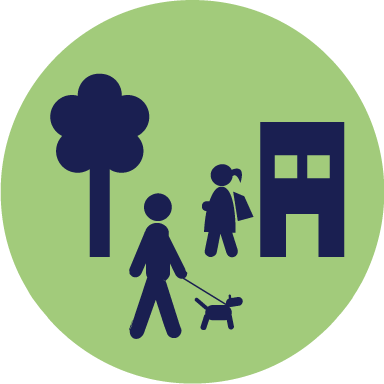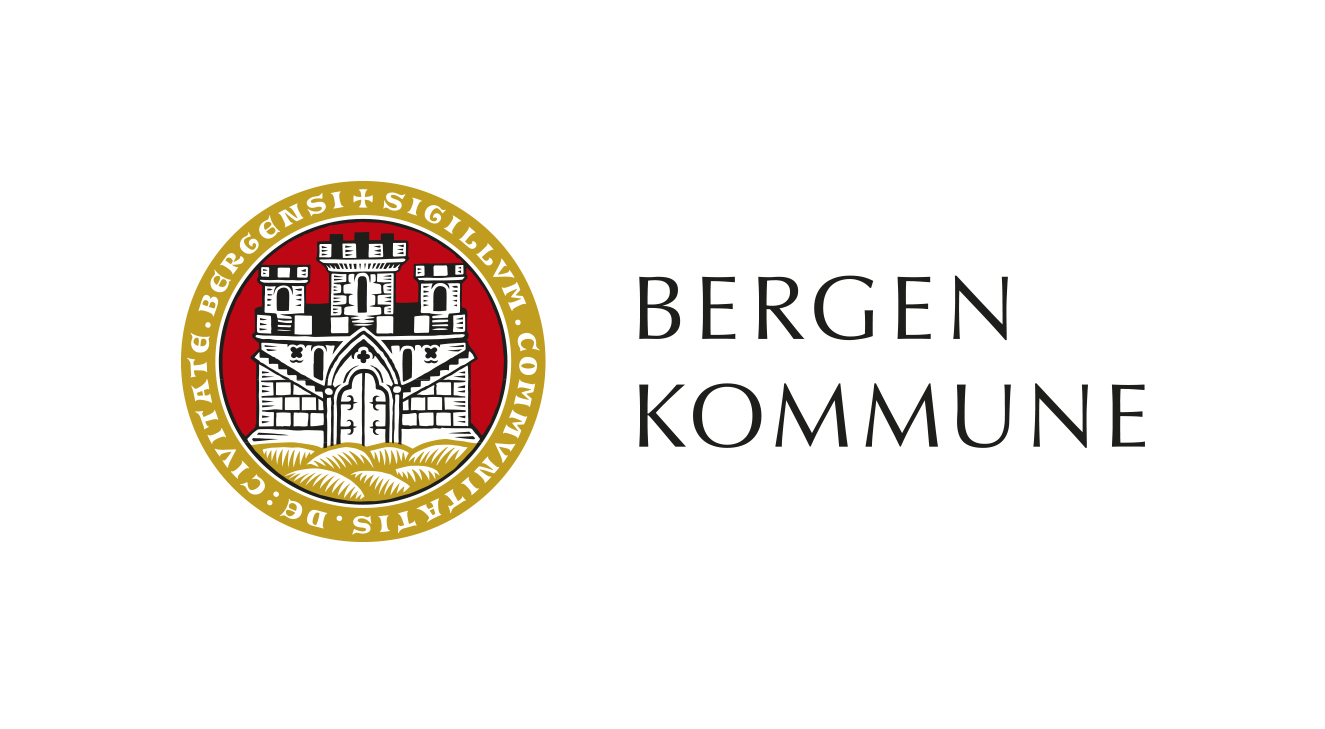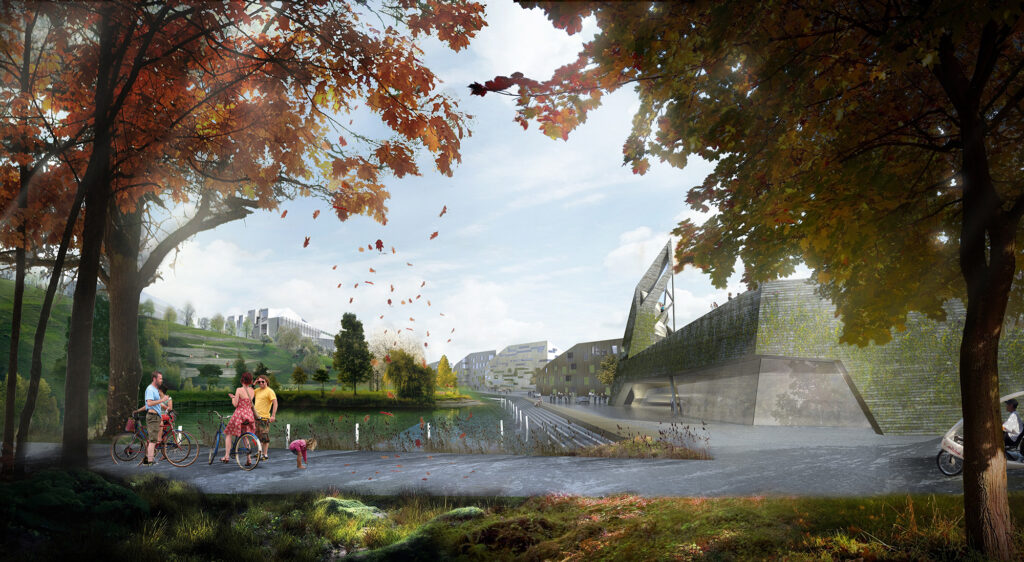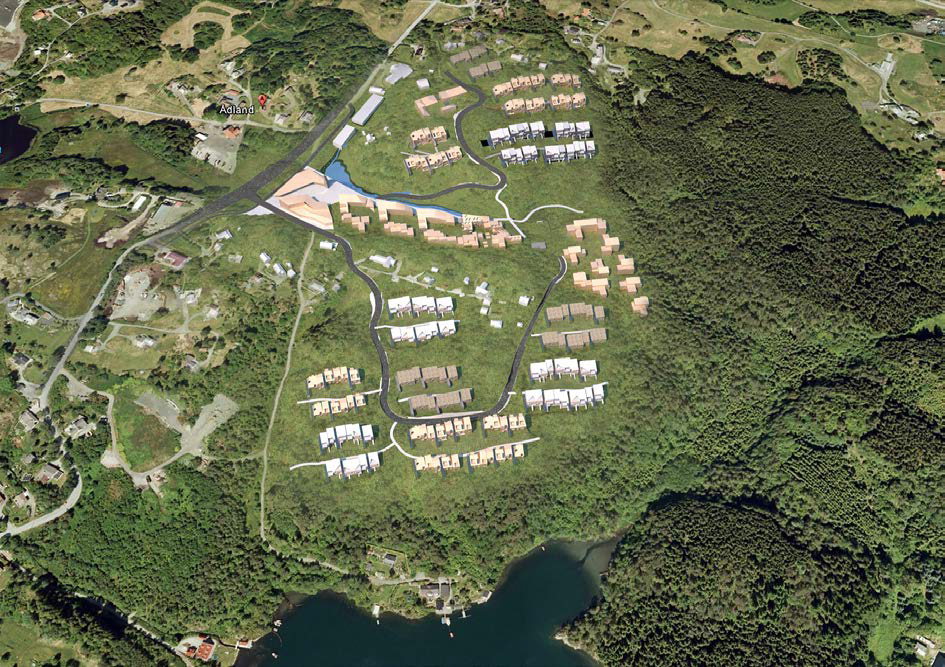
Zero Village Bergen
Pilotprosjekt: Zero Village Bergen
- Lokasjon: Bergen municipality, Norway
- Hva bygges: Residential area with a kindergarten and additional services (planned)
- Konstruksjon: New construction, 800-1000 dwellings (92 000 m2), a kindergarten and additional service functions
- Størrelse: 378 000 m2
- Prosjekteier: ByBo
- Kontakt på ZEN senteret: Judith Thomsen
- Interessenter: ByBo, Multiconsult, Snøhetta, Bergen municipality
- Involvering fra våre forskere: TBA
- Prosjektstatus: TBA
Prosjektet fokuserer på følgende ZEN-kriterier:




















Relaterte publikasjoner
Abstract
The planning of energy ambitious neighborhood pilots in Norway typically begin with the creation of holistic and socially ambitious visions based on extensive stakeholder collaboration, citizen insight generation and vision setting. However, as projects move from planning to implementation, the exploratory innovation methods are replaced by exploitative approaches. ‘The holistic vision and in particular, citizens’ described needs, fail to transfer into the implementation phase.
This paper identifies four main challenges as to why this happens and link these to theory on ambidextrous organizations that need to exploit existing knowledge while reaching into the future with its rapidly changing goals and technological opportunities. Implementing stakeholders are familiar with exploitative tools, which build on earlier experience and capabilities of the selected implementing stakeholders, and the implementation stage leaves little time and resources for innovation on a lower hierarchical level.
While extensive research on smart and integrated planning focus on ‘breaking down the silos’ meaning sectors and disciplines, our findings argue that the need to manage ambidextrous organizations and support both exploratory and exploitative innovation is equally important. An ambidextrous organization is one that has the ability to be efficient in its management of today’s business while being adaptable for coping with the changing demand of tomorrow. We propose a model in which the organizational style and management style of innovative neighborhood pilots focus more on how to transfer knowledge and learn from the bottom-up and horizontally through management that foster both innovation models.
Abstract
The objective of this report is to provide a guideline for how the assessment criteria and key performance indicators (KPIs) covered under each category of the ZEN definition (GHG emissions, energy, power/load, mobility, economy and spatial qualities) may be assessed and followed up in ZEN pilot projects. The guidelines explain relevant evaluation methodologies, focusing on what types of data that could be used to access the criteria and KPIs, how these data could be collected, and how the fulfilment of the KPIs could be documented. Furthermore, the guidelines illustrate briefly the ZEN pilot projects and main challenges identified in their development. The target group of the ZEN definition guideline is the different actors involved in ZEN pilot projects and other interested parties in the field. This first version of the ZEN guideline report highlights the limitations and scope for further work, which will be addressed in future editions of the ZEN definition report.
Sammendrag
Hensikten med denne rapporten er å gi en veiledning til hvordan de ulike vurderingskriteriene og nøkkelindikatorene i ZEN definisjonen (klimagassutslipp, energi, effekt, mobilitet, økonomi, og stedskvaliteter) kan vurderes og følges opp i ZEN pilotprosjekter. Rapporten gir en beskrivelse av relevante evalueringsmetoder, og gir en oversikt over data som er nødvendig for å gjøre evalueringene. Videre gir rapporten en kort beskrivelse av pilotområdene i ZEN, med tilhørende hovedutfordringer. Målgruppen for veilederen er aktører som er involvert i planlegging og utvikling av ZEN pilotområder, samt andre som er interessert i dette området. Denne første versjonen av en veileder for ZEN pilotområder viser også begrensninger og utfordringer mht. til videre arbeid, som vil bli adressert i fremtidige utgaver av rapporten.
Abstract
Buildings represent a critical piece of a low-carbon future and their long lifetime necessitates urgent adoption of state-of-the-art performance standards to avoid significant lock-in risk. So far, life-cycle assessment (LCA) studies have assessed buildings (conventional and Zero Emission Building (ZEB)), mobility and energy systems mainly individually. Yet, these elements are closely linked, and to assess the nexus of housing, mobility, and energy associated with human settlements by aiming for Zero Emission Neighborhoods (ZENs) gives a unique chance to contribute to climate change mitigation. ZEBs and ZENs are likely to be critical components in a future climate change mitigation policy.
This study addresses the challenge of how to use LCA when implementing such a policy, in line also with the introduction of the more stringent Energy Performance of Buildings Directive in 2010 that requires new buildings to be built with nearly ZEB standards by the end of 2020. The specific aims of this report are fourfold. First, to develop and apply an LCA model to support the evaluation of ZEN design concepts with respect to greenhouse gas (GHG) emissions and other potential environmental impacts. Second, to clarify important contributing factors as well as revealing criticalities and sensitivities for GHG emission reductions and environmental performance of such ZEN design concepts. Third, to establish a model basis for other LCA studies on a neighbourhood scale, in terms of a high-quality modelling approach regarding consistency, transparency, and flexibility. Fourth, to apply our model on two cases; a hypothetical case of a neighbourhood consisting of single family house of passive house standard and on Zero Emission Village Bergen (ZVB).
For the first case, the neighbourhood consists of single-family houses built according to the Norwegian passive house standard. We designed four scenarios where we tested the impact of the house sizes, household size, energy used and produced in the buildings, and mobility patterns. Also, we ran our scenarios with different levels of decarbonization of the electricity mix over a time period of 60 years.
Our results show the importance of the operational phases of both building and mobility at year 1, and its decline over time induced by the decarbonization of the electricity mix. In year 60, embodied emissions are then responsible for the majority of the emissions when the electricity mix is decarbonized. The most important contributing factors have been identified as the operational phases of the Building and Mobility subsystems when the carbon intensity of the electricity mix is high, and as the embodied emissions in materials when the carbon intensity of the electricity mix becomes low. A reduction of the following factors has been identified as beneficial for the overall GHG emissions of a ZEN: (1) building floor area by house either/or by inhabitants, (2) passenger cars travel distances by household, which can be achieved by several means; e.g. commuting with public transport and/or by carpooling initiatives, (3) energy use in the buildings, which is reduced by the use of the passive house standard, and (4) carbon intensity of the electricity mix.
The second case – ZVB – consists of residential and non-residential buildings, with a total area of 91 891 m2; 695 dwellings and 1 340 inhabitants. The total emissions associated with the physical elements (buildings, mobility, open spaces, networks and on-site energy) and the life cycle stages (A1-A3, B4 and B6) resulted in a total of 117 kton CO2-eq over the lifetime. This equals 1.5 ton CO2-eq/capita/year and 21.2 kg CO2-eq/m2/year, referring to heated building floor area and as yearly average emissions over the 60 year analysis period. The emissions are distributed between the elements and life cycle stages. Buildings stand for the majority of the total emissions, accounting for about 52% of the total emissions over the lifetime. The mobility is the second most contributing element, responsible for 40% of the total emissions. The emissions from the networks and open spaces constitute only 2.3% together. A sensitivity analysis showed the emission intensity for electricity and the assumption of allocating emissions from waste incineration to the waste management system rather than to district heat to have a considerable impact on the results. If an EU28+NO electricity production mix is used instead of the Norwegian electricity production mix, total emissions over the 60 years analysis period will increase with 12.5%. This is despite the fact that also negative emissions from the on-site electricity production will be larger, due to the significant increase in emissions from electricity consumed in mobility. If the emissions from waste incineration is not allocated to the district heating production, the total emissions are decreased with 25.3%. Hence, this is a most critical assumption in the LCA model.
The most important contributing factors have been identified as the operational phases of the Building and Mobility subsystems when the carbon intensity of the electricity mix is high, and as the embodied emissions in materials when the carbon intensity of the electricity mix becomes low. A reduction of the following factors have been identified as beneficial for the overall GHG emissions of a ZEN: (1) building floor area by house or by inhabitants, (2) passenger cars travel distances by household, which can be achieved by several means; e.g. commuting with public transport and/or by carpooling initiatives, (3) energy use in the buildings, which is reduced by the use of the passive house standard, and (4) carbon intensity of the electricity mix.
Introducing passive house standards on buildings has the potential to drastically decrease the overall CO2-eq emissions of a ZEB, but also of a ZEN; up to by 191% when assuming an average European electricity mix. Yet, by using a highly decarbonized electricity mix, such as is the case in Norway, the decrease is much lower, around 12%.
Also, we found the choice of the functional unit to be decisive for the conclusion of the study. When conducting LCAs on a neighbourhood scale, we thus argue for the use of a primary functional unit “per neighbourhood”, and a second “per person”. The use of a “per m2 floor area” unit is misleading as it does not give credits for reducing the total built floor area.
All these findings demonstrate that the model is capable of long-term analyses of both homogenous and complex neighbourhoods, and provides a detailed understanding of possible future development of the different elements of the neighbourhood and their GHG emissions.
This report is a part of FME ZEN Work Package 1 Analytic framework for design and planning of zero emission neighbourhoods (ZEN). The goal for WP 1 is to develop definitions, targets and benchmarking for ZEN, based on customized indicators and quantitative and qualitative data. Additionally, an LCA methodology for energy and emissions at neighbourhood scale is developed, as well as a citizen-centred architectural and urban toolbox for design and planning of ZEN.
Summary
This report on the pilot projects of the Research Centre on Zero Emission Neighbourhoods in Smart Cities will give the reader an overview of eight pilot projects of the Centre, focusing on the challenges to develop or transform the pilot areas into Zero Emission Neighbourhoods.
The objective of the ZEN Centre is to develop products and solutions that will lead to the realization of sustainable neighbourhoods with zero greenhouse gas emissions. These solutions will be tested in the eight real life pilot projects in Norwegian municipalities. When searching for the best solutions, we first need to map the pilot projects and the challenges they are facing on the way to become sustainable zero emission neighbourhoods. This report will therefore serve as an introduction to the eight pilot projects to help the ZEN partners to develop an understanding for the pilot projects and their challenges, as a base for further research and cooperation.
This report will start with a short introduction of the Research Centre and present a working definition for a Zero Emission Neighbourhood. Each of the eight pilot projects are described in detail by their individual characteristics regarding location, stakeholders, goals, measures, status of project development, and challenges. Challenges were identified through qualitative interviews with stakeholders of the pilot projects. These interviews were conducted in 2017.
A systematic documentation of the process and challenges to develop ZENs will help to identify the success factors and best practices that are needed for planning and developing ZENs. This enables the involved partners to learn from the first pilot projects, and to transfer solutions to other neighbourhood developments. This report provides a foundation for further follow-up, documentation, and analysis.
Norwegian Summary
Denne rapporten vil gi leseren en oversikt over de åtte pilotprosjektene i ZEN Forskningssenter, med fokus på utfordringene som ligger i å utvikle og transformere pilotprosjektene til nullutslippsområder.
Målet med forskningssenteret ZEN er å utvikle produkter og løsninger som vil føre til realisering av bærekraftige nabolag med null klimagassutslipp. Disse løsningene blir testet i åtte pilotprosjekter i norske kommuner. Når vi søker etter de beste løsningene, er det viktig å ha kartlagt pilotprosjektene med tanke på de utfordringene de står overfor med tanke på å oppnå bærekraftige nabolag med null utslipp av klimagasser. Denne rapporten vil derfor fungere som en introduksjon til de åtte pilotprosjektene og skal hjelpe ZEN-partnerne til å utvikle en felles forståelse for pilotprosjektene og deres utfordringer som grunnlag for videre forskning og samarbeid.
Rapporten starter med en kort introduksjon av forskningssenteret og en arbeidsdefinisjon av hva som legges i ZEN. Hvert av de åtte pilotprosjektene er beskrevet i detalj med deres individuelle egenskaper som plassering, interessenter, mål, tiltak, status for prosjektutvikling og utfordringer. Utfordringene ble identifisert gjennom kvalitative intervjuer med de involverte aktørene i pilotprosjektene, mange av dem er ZEN partnere. Disse intervjuene ble gjennomført i 2017.
En systematisk dokumentasjon av prosessen og utfordringene med å utvikle ZENs vil bidra til å identifisere suksessfaktorer og beste praksis for å planlegge og utvikle ZEN. Dette gjør det mulig for de involverte partnerne å lære fra de første pilotprosjektene og overføre løsninger til andre byutviklingsprosjekt senere. Denne rapporten danner grunnlaget for videre oppfølging, dokumentasjon og analyse.
This document outlines the definition, key performance indicators (KPI) and assessment criteria for the Research Centre on Zero Emission Neighbourhoods in Smart Cities (ZEN research centre). This first version of the ZEN definition includes contributions from the ZEN partners. In total, around 50 people involved in the ZEN research centre have contributed to this document.
————————————————————————
Denne rapporten beskriver definisjonen, nøkkelindikatorer og vurderingskriterier som benyttes i forskningssenteret for nullutslippsområde i smarte byer (ZEN senteret). Dette er den første utgaven og inkluderer innspill og bidrag fra ZEN partnerne. Til sammen har omkring femti eksperter fra ZEN senteret bidratt til dette dokumentet. Rapporten foreligger både på engelsk og norsk.
M. K. Wiik, S. M. Fufa, J. Krogstie, D. Ahlers, A. Wyckmans, P. Driscoll, H. Brattebø, A. Gustavsen
Dette dokumentet inneholder forslag til kriterier for hva som skal være krav og retningslinjer, samt roller og ansvar knyttet til å være et pilotprosjekt i forskingssenteret Zero Emission Neighbourhoods.
Inger Andresen
Based on discussions with the ZEB partners, three possible solutions have been investigated for the energy system of Zero Village Bergen:
- District Heating (DH)
- Biomass fired Combined Heat and Power (Bio CHP)
- Ground Source Heat Pump (GSHP)






































